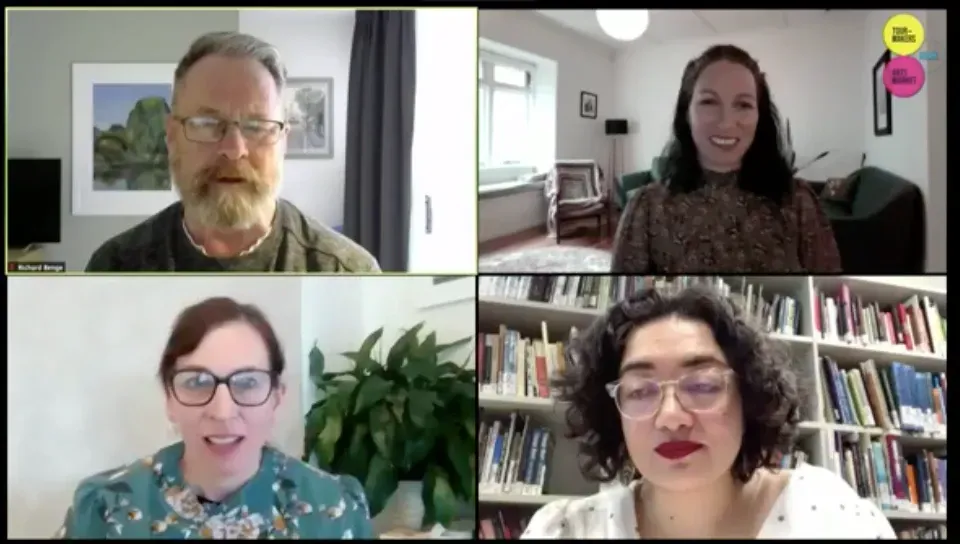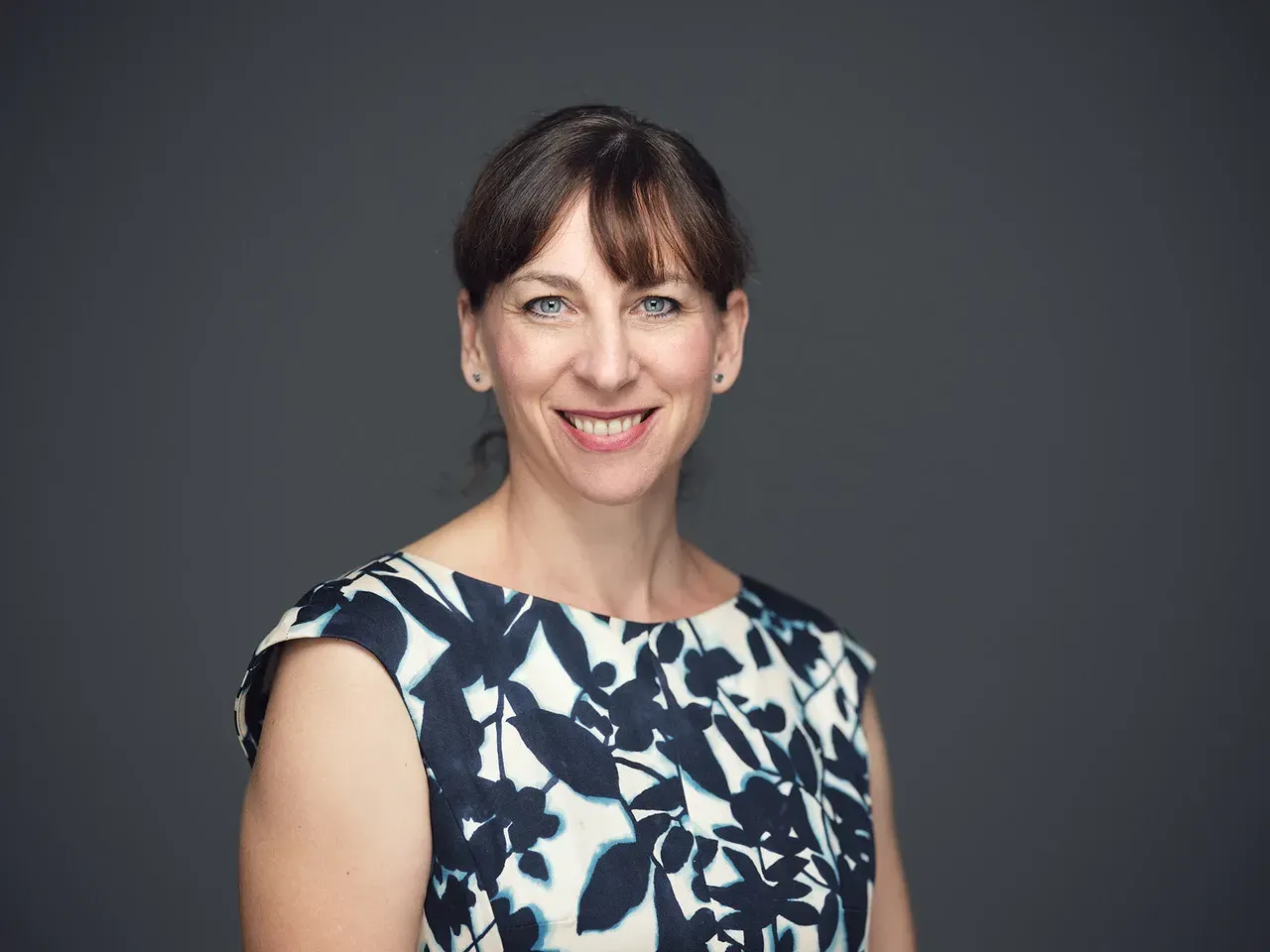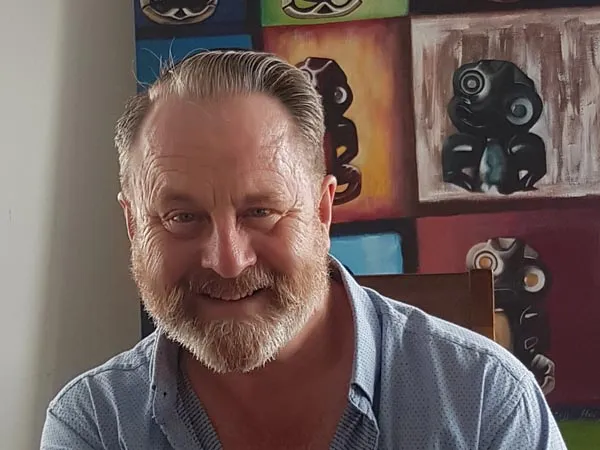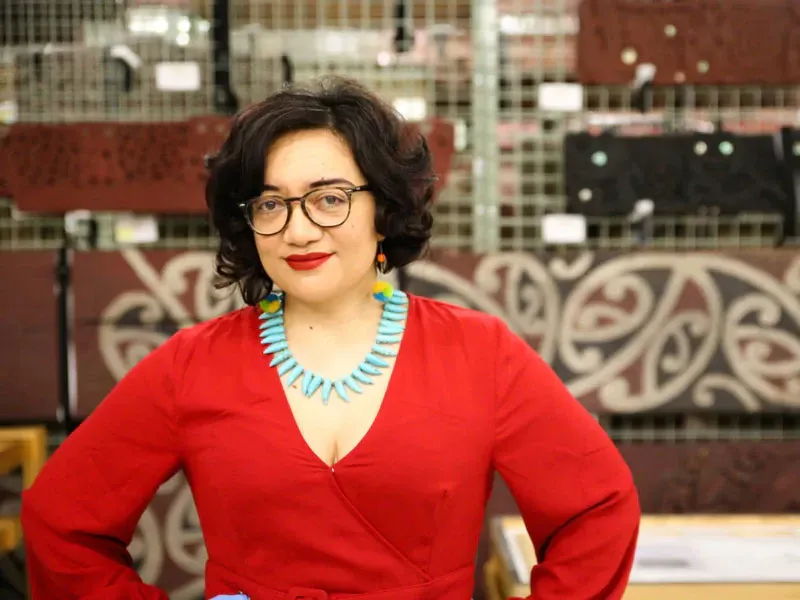Leave No One Behind
Written by

“He paruparu te kai, he taniwha ngā tangata” - ‘When resources are scarce, the people become as taniwha’ - Māori Proverb
“I interpret this saying to say [people] don’t fall over when they face adversity. They rise up and work with scarcity to become strong -[this saying] speaks to an active process,” says Puawai Cairns, (Ngāi Te Rangi, Ngāti Ranginui, Ngāti Pūkenga) Acting Director of Audience and Insights at Museum of New Zealand Te Papa Tongarewa.
Cancelled Conference Revived
‘Adversity’ could be the universal noun of 2020.
We have been all impacted as individuals and as a collective in the wake of COVID-19. Given the circumstances we now find ourselves in, Creative New Zealand’s annual leadership conference Nui te Kōrero was set to be a pertinent and prophetic discussion. The intention of the two-day event was to explore what makes a resilient arts sector - both in the present and future - and how to build a sector that will ultimately benefit all New Zealanders through discovering new ways of working and valuing the art.
Like literally hundreds of events up and down the country, Nui te Kōrero was scuppered by COVID-19 but was reworked to fit the new normal that we find ourselves in, becoming the timely topic of the seventh PANNZ hui.
As we take stock of our arts sector and begin to rebuild over the coming months and years, we would do well to keep the words of panellists Helen Khoey, Richard Benge, Stace Robertson and Puawai Cairns at the forefront of our minds.
Like all of the PANNZ hui to date, the discussions were underpinned with a focus on using COVID-19 as a chance to break down outdated structures and rebuild a truly diverse arts sector. For these panellists, cornerstones of this new world include resilience, accessibility and Te Ao Māori.
Importance of Resilience
Helen Khoey. Photo: Supplied.
“We can use this as an opportunity to create a stronger ecosystem and ultimately a stronger world,” asserted Helen Khoey, Senior Adviser, Audience Development & Capability Building at Creative New Zealand and the first speaker of the hui.
Resilience was at the heart of Khoey’s contribution, calling on Dr Lucy Hone’s TED Talk Three Secrets of Resilient People. “They get that bad stuff happens and that suffering is part of life, of every human existence,” says Khoey. “Knowing this stops them from feeling discriminated against- instead of saying ‘why me’ they say ‘why not me?’
“[The second secret is] they realistically appraise situations and look at what they can change rather than what they can’t. They’ve learnt how to tune into the good,” she continues. “Finally, they are able to ask themselves - is what I’m doing helping or harming me? Am I being kind to myself?.”
Bringing these learnings back to the arts sector, Khoey believes that it will be audience-focused organisations that will be more resilient as we rebuild from COVID-19. “They can engage much more deeply than bums on seats - if organisations can build a strong and engaged audience, it can help to sustain them through a crisis - look at Whammy and Winecellar and the Save Our Venues initiative,” she says.
Looking to the future, Khoey was interested in exploring how we can build a stronger, more diverse community around institutions, with digitalisation being a key factor. “[One of the benefits of COVID-19] is that it has been able to provide audiences with insights behind the scenes and more accessibility - the Royal New Zealand Ballet’s Live in Your Living Room was not just a live stream - they have the ballet being described by a choreographer,” she says.
“Digitalisation allows more audiences to access the arts - it is more equitable - there are benefits to the digitalisation of the arts sector. But there are questions - how might we pursue digital audiences in their own right? How can Creative New Zealand support this? To what extent is the sector preparing to operate in scarcity?”
“We’ve had a taste of the planet hitting the pause button, so how can we use this to grow some awesome ideas for the benefit of all people, because there was a lot that [the status quo] wasn’t working for. “
Accessibility: More than a Buzz Word
Richard Benge. Photo: Supplied.
Richard Benge, Executive Director with Arts Access Aotearoa filled in on behalf of Stace Robertson - Access, Participation and Inclusion Advisor at Arts Access Aotearoa.
Merging his own thoughts with Robertson’s, the duo focused on what the artistic sector could learn from people with disabilities and how we can create an accessible artistic ecology for the future.
“In the 2013 census, 20% of New Zealand’s population was found to have some sort of disability,” says Benge. “Arts organisations are potentially missing out on over one million people participating and gaining access to the arts. [Arts Access Aotearoa] works with arts organisations, artists - everyone in the arts sector - to make the arts more accessible, because with accessibility comes resilience.”
Benge then read Robertson’s notes, offering a vital perspective as a disabled person:
“Disabled people and others who are marginalised are resilient, we are used to having to navigate barriers and problem solve and make do with less resources than others,” writes Robertson.
“I think when we talk about building a resilient arts sector, we should be building an arts sector that is resilient at a people level.
“Looking after the wellbeing of individuals as well as at an organisational level so that people feel able to have a career in the arts, so we can build a sector which is not leaving anyone behind.
“A big part of what that might look like is not rushing back to ‘business as usual’ but taking the time to explore how to build a more representative inclusive new normal.
“Many of the accommodations that have become so essential to us over the past few months are things that disabled people have been asking for, for a really long time, like the opportunity to work from home or Zoom into a meeting.
“It’s ironic that some disabled people have found the lockdown period to be more accessible than life was previously….I know that myself and other disabled folks are worried those accommodations will be lost once non-disabled people don’t need them, rather than built upon which would be a shame and a missed opportunity. Increasing accessibility benefits everyone.”
For Robertson, “marginalised people are masters of experimentation, problem-solving and strategic thinking who are navigating barriers and are innovating all the time and have great skills and experience to contribute.
“I hope for an arts sector that recognises that diverse experiences and ways of being in the world strengthen the collective resilience of the arts.”
All In
Puawai Cairns. Photo: Supplied.
“Never waste a good crisis,” declared Cairns, the final speaker of the hui. “COVID-19 has been a call for attention for some issues we’ve wanted to be aired for a long time - accessibility, resilience, inclusion.”
Cairns focused much of her discussion on “building resilience so we don’t leave anyone behind” which includes a future that cultivates a “sustainable work environment for indigineous people and making conscious decisions of how people are involved and included.”
“The idea of resilience is based on privilege,” Cairns continues. “It requires resource, time, planning, it is a type of mentality that is years in the making - it can’t be switched on when you face adversity. We need people to be leaders in an equitable, humane way.”
As the impact of COVID-19 became clear, Cairns was concerned about what she coined as “pale panic - the sector was concerned about diversity and inclusion and I didn’t want COVID-19 to become an opportunity for a reduction of these issues because decisions had to become rapid and sleek. Now is the opportunity to expand and bring people with us.”
Moving forward, Cairns wants to “stay with the vulnerable, to base recovery on social justice.
“Don’t just abandon things - reflect and continue to learn about things that have worked for us. We can’t pretend that everything will be the way it was in February - that will require some grieving, but we learnt things about ourselves and society that have been heartening and are worthy of celebration.
“It took a virus to come through and remind us how precarious everything really is.”
To watch a replay of this PANNZ/CNZ hui - click here.


